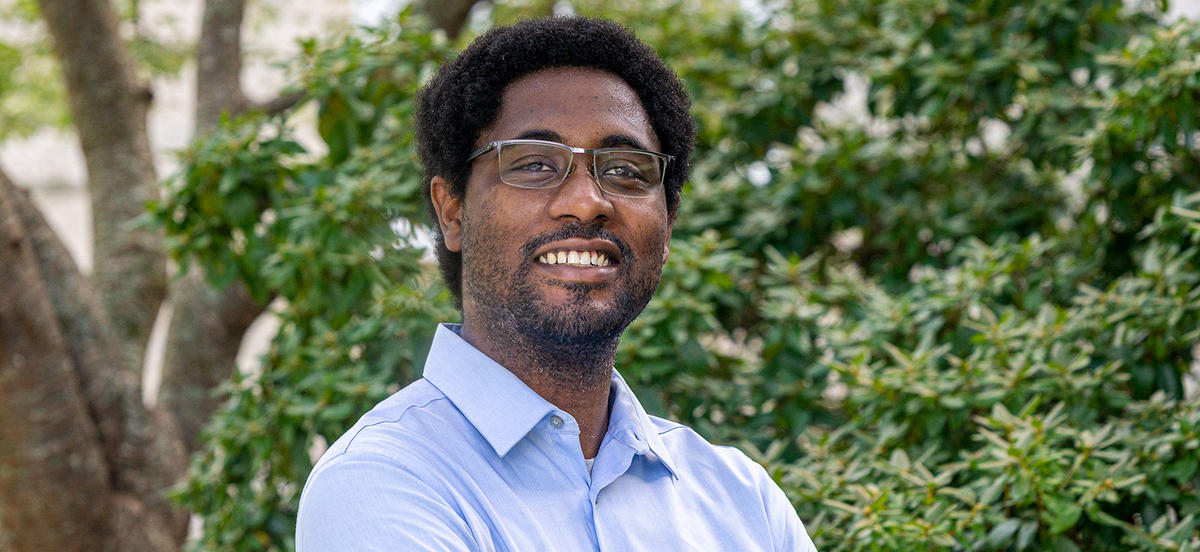Clyde Daly Wins NSF Award

Assistant Professor of Chemistry Clyde Daly, who joined the Haverford faculty just two years ago, has received a National Science Foundation grant for $249,989 to support his research. Photo by Patrick Montero.
Details
The grant from the National Science Foundation will support the assistant professor of chemistry’s work in alkyne spectroscopy.
Assistant Professor of Chemistry Clyde Daly’s research uses modern computational techniques to help explain the structure and dynamics of complex molecular systems. A new grant from the National Science Foundation will support his work developing a vibrational spectroscopic map for terminal alkyne molecules. This work will not only engage student researchers in his lab in cutting-edge science, but will also help unlock a deeper understanding of the work his Chemistry Department colleagues, Lou Charkoudian and Casey Londergan, have done understanding the motions of acyl carrier proteins.
“I’m hoping to use computational molecular dynamics simulations to visualize these protein motions, by literally making an atom-level movie of the protein,” said Daly, who joined the Haverford faculty two years ago. “If I had a spectroscopic map for alkyne molecules, I could predict what the Raman spectra that match my protein movies would look like. I could then compare those Raman spectra to the ones that Professor Charkoudian and Professor Londergan get from real proteins. If they’re similar, then we can trust that my movies are actually a good representation of what the real proteins are doing! Unfortunately, a spectroscopic map for alkyne molecules doesn’t yet exist— this grant is mainly focused on building this and similar tools and understanding the alkyne molecules involved more deeply.”
The NSF grant for $249,989 will be “transformative” for the research, he said, as it will allow him to hire a postdoc for his lab and purchase a new workstation with a high-quality graphics processing unit that can run very fast molecular dynamics simulations. (Starting this summer, that postdoc will be current Visiting Professor of Chemistry Kristy Streu.) It will also support student work on the project—both as stipends for summer researchers and to pay for work-study during the school year to engage students from backgrounds underrepresented in mathematical and physical sciences.
Several students have already been involved in the project. Sara Hunsberger ‘22 completed much of the preliminary work that helped secure the grant. Her math thesis work on underlying nuclear quantum mechanics methods will be the basis upon which the rest of the project is built. Theresa Haupt ‘24 has been running molecular dynamics simulations to figure out the best way to collect data for the next phase of the project. Briana Boachie ‘24 has been writing code to help perform vibrational quantum mechanics calculations on more complex alkynes. And Scott Kaiser ’22 and Logan Smith ‘23 have, while working on a different project, written code necessary for the alkyne map project.
“My team is interested in changing the paradigm of spectroscopic mapping,” said Daly. “The old paradigm is to make very specific maps which only work in very specific circumstances. We want to move the field towards making widely applicable spectroscopic maps by using larger datasets and powerful machine learning methods.”



